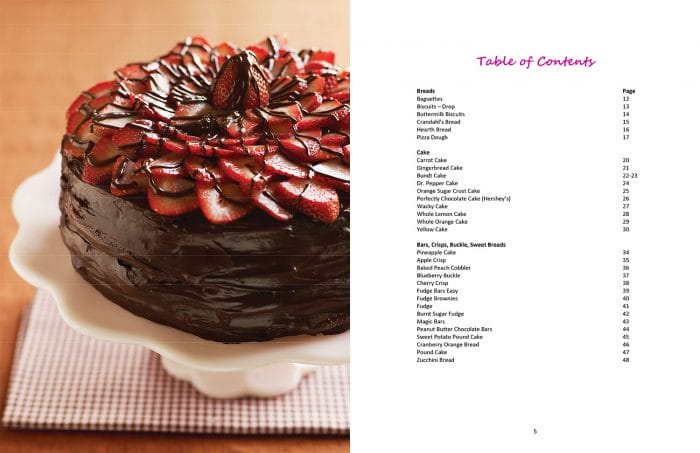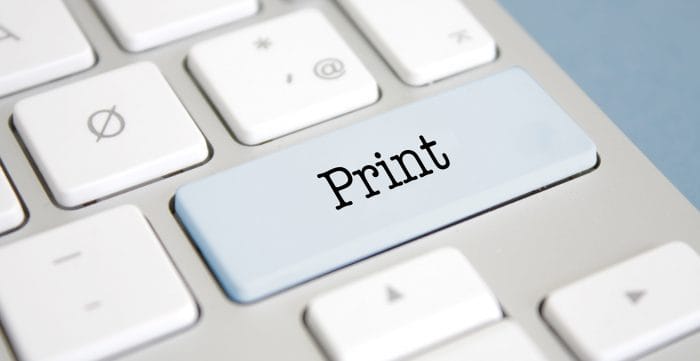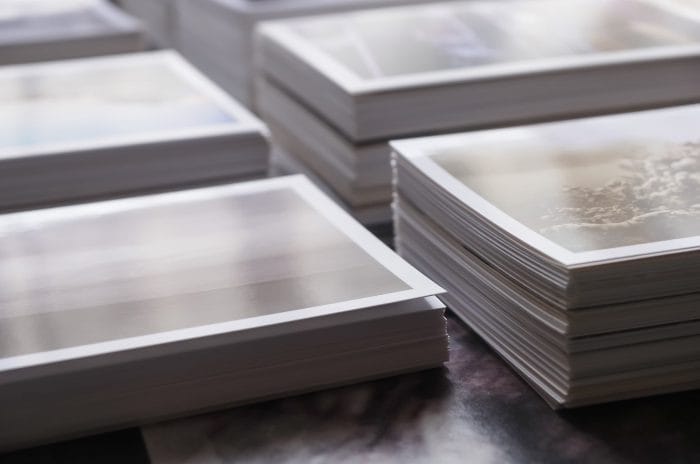Cookbook Printing
Create Delicious Recipes with Professional Cookbook Printing
Are you passionate about cooking and eager to share your culinary expertise with the world? Nothing beats the joy of creating your own cookbook filled with cherished family recipes, mouth-watering food photography, and a personalized design that reflects your style. With professional cookbook printing services, you can turn your dream cookbook into a reality that will wow your audience and leave a lasting impression. Let’s embark on this journey and explore the world of cookbook creation and printing!
Short Summary
- Create a custom cookbook with professional cookbook printing services.
- Gather and organize recipes for inclusion in the book.
- Utilize eco-friendly options and marketing to promote your self-published cookbook.
Creating Your Custom Cookbook
Creating your own cookbook is a labor of love, and it requires meticulous planning and attention to detail. From gathering and organizing recipes to selecting the perfect layout and design, every step of the process is crucial in crafting a custom cookbook that will stand out on the shelf, including choosing the right cookbook cover.
With the help of professional cookbook printing services, you can ensure high quality cookbook printing that showcases your culinary masterpieces and captures the essence of your unique style.
Gathering and Organizing Recipes for Cookbook Printing
One of the most important aspects of creating your own cookbook, especially a family cookbook, is collecting and organizing your recipes. Here are some ways to do it:
- Reach out to family members and request their favorite recipes
- Organize a family recipe exchange where everyone brings a printed copy of their masterpiece to share
- Create a shared online document or folder where family members can upload and access recipes
- Host a family cooking or baking day to gather recipes and create lasting memories together
Once you’ve collected your recipe file, it’s time to organize them into a cohesive and well-structured family recipe book. Here are some steps to follow.
- Divide the recipes into sections based on ingredients, type of entrée, or any other category that makes sense for your cookbook.
- To make it easy for both novice and experienced cooks to navigate your cookbook, consider utilizing die-cut tabs to distinguish sections such as “Salads,” “Entrees,” and “Desserts.”
- You can also include a full-color photo or a collage of photos for each section to create a visually appealing cookbook.
Personalizing Your Cookbook
If the cookbook’s purpose is to highlight recipes that grandma can make with her grandchildren, then photos of family members in the kitchen together would be more meaningful than a beautiful food photo. But if the cookbook will be available commercially, a mix of gorgeous photos and personal anecdotes will help make the book personal, while also appealing to everyone.
Photos: To ensure the cookbook looks great, try to only use new photos that are at least 300 dpi. But even though historical photos may not be as crisp as new ones, including older pictures is still a good idea in family cookbooks since those pictures evoke strong memories and make the book more meaningful.
Photographs of the recipe author with the ingredients, in their kitchen, or serving the food as well as photos of the original handwritten recipes will add interest to the book. Of course, pictures of the prepared recipes will appeal to foodies as well.
Anecdotes: One of the easiest ways to personalize a family cookbook is to include personal anecdotes about each recipe. Details like when grandma made this cobbler, the reason this dish was served at every holiday, or even a description of how different family members serve this food in their own kitchens can create an intimate connection to the recipes.
Interviews: Especially memorable is the inclusion of interviews completed specifically for the cookbook content. Snippets can be sprinkled throughout the book, or they can be placed in a dedicated section of the book. For cookbooks focusing on the recipes of one beloved family member, an interview can be a great way to present new information about them to the reader in a Q & A format or even using specific portions of the transcript.
Quotes: Humorous or helpful quotes are fun to pair with recipes.
Stories: Consider injecting family stories throughout the cookbook that tie into the recipes or the theme of the cookbook.
History: Perfect for personalizing the family cookbook printing, historical family information shows the recipes and family in action through the years. Historical photos of the recipes used at events or meals as well as relevant news articles or publications about the family will make the cookbook a family keepsake for generations to come.
Professional Food Photography
A picture is worth a thousand words, and in the world of cookbooks, professional food photography is essential in producing an attractive and visually captivating cookbook. Food photography is an art form that showcases the food in the most appetizing way possible, using specialized techniques, lighting, and styling. Professional food photographers are often contracted by chefs, restaurants, food brands, and publishers to produce enticing visuals for cookbooks, magazines, advertisements, and websites that require thicker paper for better print quality.
Investing in professional food photography will not only elevate the overall aesthetic of your cookbook, but will also entice readers to try your recipes. A well-executed, mouth-watering image can be the difference between a cookbook that gathers dust on the shelf and one that becomes a prized possession in the kitchen. So don’t skimp on the visuals – enlist the help of a professional food photographer to ensure your cookbook is a feast for the eyes as well as the palate.
Cookbook Templates and Design Tools
Design plays a crucial role in the success of your cookbook. A polished and professional layout not only enhances the reader’s experience, but also sets your cookbook apart from the competition. One way to achieve this is by utilizing cookbook templates and design tools, which provide pre-designed layouts specifically tailored for constructing a cookbook. These cookbook templates often include sections for:
- Recipes
- Ingredients
- Instructions
- Images
Cookbook templates can be customized to suit your desired style and content.
To personalize your cookbook, consider using design software such as Adobe Illustrator or Adobe InDesign. These programs offer powerful tools to help you create visually stunning layouts that perfectly complement your recipes and images. Additionally, many printing services offer free templates and customization options to make the design process as seamless as possible.
Remember, a well-designed cookbook is not only visually appealing but also user-friendly, ensuring that your readers can easily navigate and enjoy your culinary creations. With a cookbook online, this experience can be even more accessible and convenient for your audience.
Choosing the Best Cookbook Printing Services
Finding the best cookbook printing services is a crucial step in bringing your custom cookbook to life. With so many options available, it’s important to compare printing methods, assess customer service, and evaluate the quality of the final product.
By carefully considering these factors, you can confidently choose a printing service that will deliver a beautiful, professionally printed cookbook that exceeds your expectations.
Comparing Printing Options
There are various printing options available for your cookbook, including:
- Offset printing: an established technique that uses plates to transfer images to a printing surface. This method is ideal for large-scale print runs and offers vivid colors, long-lasting ink surfaces, and specialized features.
- Print-on-demand: a digital printing method that allows you to print books as they are ordered. This option is cost-effective for small print runs and offers flexibility in terms of quantity. However, it can be expensive since you are only printing one cookbook at a time.
- Digital printing: a modern printing method that uses digital files to directly print onto the paper. This method is suitable for short print runs and offers quick turnaround times and customization options.
Each method has its own set of advantages and disadvantages, so it’s essential to weigh your options and determine which one is the best fit for your project.
On the other hand, print-on-demand is a digital printing technique that allows you to print only the required number of copies, making it perfect for smaller print runs. Digital printing is another option that is fast and cost-efficient, suitable for printing on porous surfaces like business cards and postcards.
Ultimately, the choice of printing method will depend on your specific needs, budget, and desired quality. Consult with a printer to identify the most suitable printing option for your cookbook.
Evaluating Customer Service
Excellent customer service is essential for a smooth and successful printing experience. When selecting a printing company, consider factors such as the competency of customer service representatives, the speed of response, and the accuracy of the information provided. To find great customer service, examine the company’s reputation, review customer feedback, and request references. Look for companies that offer multiple customer service channels, such as phone, email, text, chat, and in-person interactions. Dazzle Printing has over 150 5-star Google reviews.
Don’t hesitate to reach out to potential printing services for a discussion about your requirements or to request a complimentary quote. This will not only give you an idea of their pricing and services, but also allow you to gauge their level of customer support. Remember, a company that is committed to providing exceptional customer service will go the extra mile to ensure that your cookbook printing project is a success.
Selecting the Perfect Paper Stock
The paper stock you choose for your cookbook plays a significant role in the overall quality and appearance of the finished product. Selecting the perfect paper stock involves considering factors such as gloss vs. matte finishes and recommended paper weights.
By understanding the different types of paper available and consulting with a professional printer, you can make an informed decision that will result in a stunning and durable cookbook.
Gloss vs. Matte Paper
Papers that are gloss or matte are two popular options for cookbook printing, each with its own advantages. Gloss paper has a heavier coating, resulting in a smoother and more lustrous appearance. It is particularly well-suited for cookbooks with full-page color photography, as it offers a vivid and glossy finish that will make the images pop. However, gloss paper can be more reflective and may not be the best choice for cookbooks with a significant amount of text.
Matte stock, on the other hand, has a semi-gloss finish and is less reflective. This makes it more suitable for cookbooks with a lot of text, as it offers a non-reflective surface that makes the text easier to read. Additionally, matte stock minimizes glare from overhead lighting, making it a great choice for cookbooks that will be used in the kitchen.
Ultimately, the choice between gloss and matte paper will depend on your cookbook’s content and your personal preferences.
Paper Weight Recommendations
Paper weight is another critical factor to consider when selecting the perfect paper stock for your cookbook. The weight of the paper can impact not only the durability and feel of the book, but also the readability of the text and images. While there is no definitive answer for the ideal page count or paper weight for a cookbook, it’s essential to consult with a printer to identify the suitable paper stock for your project.
In general, cookbooks with a higher page count may require thicker paper to ensure durability and prevent pages from tearing easily. On the other hand, cookbooks with fewer pages or primarily text-based content may not require as thick a paper. Keep in mind that the choice of paper weight will also affect the overall cost of printing, so it’s important to strike a balance between quality and affordability when making your decision.
Binding Options for Your Cookbook
The binding of your cookbook is an important element that contributes to the overall look and feel of your finished product. With several binding options available, such as plastic coil bound, wire-o bound, and softcover, it’s crucial to understand the differences between these options and select the one that best suits your cookbook’s content, design, and intended use.
When considering the binding of your cookbook, think about the type of content you’re interested in.
Spiral Bound Books
A spiral bound book, also known as plastic coil binding, and wire-o binding offer several benefits for cookbooks. These binding methods allow your cookbook to lay flat when opened, making it easy to follow recipes while cooking in the kitchen. Spiral binding and wire-o provide durability and allows for convenient flipping of pages, making it a popular choice for cookbooks, manuals, and educational materials.
In addition to its practical advantages, spiral bound and wire-o cookbooks also present a professional aesthetic that is suitable for cookbooks and other publications that require a polished look. With a durable binding and easy-to-use format, plastic coil bound cookbooks are an excellent option for showcasing your culinary creations in a user-friendly and attractive manner.
Softcover Options
Softcover books are bound with flexible covers made from paper or cardstock. They are generally less expensive than hardcover books and are more lightweight and portable. Consider adding lamination to a softcover cookbook to offer additional heft to the cover and to protect it.
Cookbook Sizes and Formats
Selecting the right size and format for your cookbook is crucial in ensuring an aesthetically pleasing and easy-to-use finished product. With various size options and formats available, such as landscape and portrait orientation, it’s important to consider the best dimensions and layout for your particular cookbook project.
The size of your cookbook should be determined by the number of recipes you plan to include.
Popular Cookbook Sizes
Cookbook sizes can range from 5.5 x 8.5 inches to 12 x 12 inches, with popular sizes such as 8 x 10 inches and 7.5 x 9.25 inches. For first-time publishers with a limited budget, a size of 8.5’’ by 8.5’’ is recommended. Keep in mind that the size of your cookbook will also impact the cost of printing, as larger sizes typically require more materials and may be more expensive to produce.
When selecting the size of your cookbook, consider the types of recipes you’ll be including and the layout of your content. If your cookbook features many full-page images or requires multiple columns of text, a larger size may be more suitable. Consult with a printer to discuss the various size options available and determine the best dimensions for your cookbook project.
Landscape vs. Portrait Orientation
The choice between landscape and portrait orientation for your cookbook depends on the type of content you plan to include and your personal design preferences. Landscape orientation offers increased space for images and text, making it an ideal choice for cookbooks with numerous images and recipes. Additionally, landscape orientation provides more design possibilities, such as multiple columns of text.
Portrait orientation, on the other hand, provides a more compact and condensed text area, which can improve readability and make it easier to follow recipes. However, portrait orientation may limit the space available for images and design elements.
Ultimately, the choice between landscape and portrait orientation will depend on the specific needs of your cookbook, the type of content you plan to include, and your personal design preferences.
Eco-Friendly Cookbook Printing
In today’s environmentally conscious world, it’s important to consider eco-friendly options when printing your cookbook. Eco-friendly cookbook printing involves adopting sustainable practices and materials, such as using recycled paper derived from post-consumer waste and soy-based inks. By choosing eco-friendly printing options, you can minimize your carbon footprint and promote sustainability in the production of your cookbook.
By choosing an eco-friendly printing service, you can create a beautiful, high-quality cookbook that aligns with your values and supports a greener future.
Marketing and Selling Your Self-Published Cookbook
Once your beautifully crafted cookbook is printed, it’s time to share it with the world. Marketing and selling your self-published cookbook involves:
- Devising a strategy for reaching potential readers
- Determining the optimal launch date
- Crafting targeted advertising campaigns
- Exploring distribution options
Our research suggests that cookbooks are most successful when released between January and April, so plan your marketing efforts accordingly.
Consider promoting your cookbook through targeted ad campaigns on social media, blog posts, and email newsletters. Collaborate with other food bloggers or influencers to reach a wider audience and generate interest in your cookbook. As for distribution, self-published cookbooks can be sold through online retailers, directly to customers, and even in brick-and-mortar stores.
With a well-planned marketing and sales strategy, your self-published cookbook can reach the hands of eager readers who will cherish your culinary creations.
Summary
Creating your own custom cookbook is a rewarding journey that allows you to share your passion for cooking and showcase your culinary talents. By carefully considering factors such as organizing recipes, food photography, design, printing services, paper stock, binding options, sizes, formats, and eco-friendly practices, you can create a beautiful, professional, and high-quality cookbook that will be cherished for years to come. So gather your favorite recipes, set your creative vision, and embark on the exciting journey of creating and printing your very own cookbook.
Frequently Asked Questions
How do you make and sell your own cookbook?
Create an audience of cookbook buyers, be authentic, engage with your followers, post regularly, get creative with food styling, document your process and collaborate with local artisan brands to make and promote your cookbook idea.
What is the best way to gather and organize family recipes for a custom cookbook?
Gather recipes from family members, host an exchange or create a shared document, and organize a cooking day for the ultimate custom cookbook.
This is a great way to preserve family recipes and create a unique cookbook that everyone can enjoy. It’s also a great way to bring family members together and create lasting memories.
Start by asking family members to help.


















